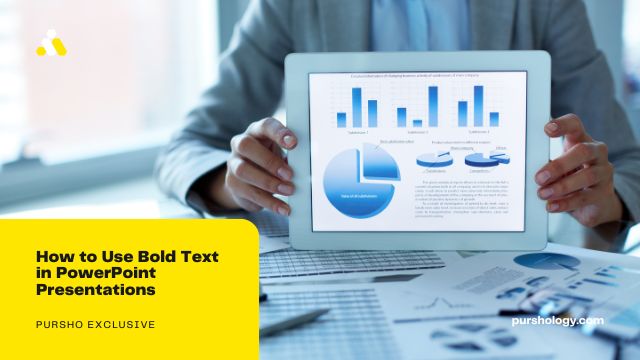To use bold text in PowerPoint presentations, you can follow these steps:
Select the text you want to make bold.
In the “Home” tab, locate the “Font” section.
Click on the “B” icon or press “Ctrl + B” on your keyboard to make the text bold.
Alternatively, you can right-click on the selected text and choose “Bold” from the drop-down menu.
You can also use the keyboard shortcut “Ctrl + Shift + B” to toggle bold formatting on and off for the selected text.
Note that using too much bold text generator in your presentation can make it harder to read and less effective. Use bold text sparingly and strategically to emphasize important points and make them stand out to your audience.
How to Use Bold Text in Word Documents:
To use bold text generator in a Word document, you can follow these steps:
Select the text you want to make bold.
Click on the “Home” tab in the ribbon.
Locate the “Font” section.
Click on the “B” icon or press “Ctrl + B” on your keyboard to make the text bold.
Alternatively, you can right-click on the selected text and choose “Bold” from the drop-down menu.
You can also use the keyboard shortcut “Ctrl + Shift + B” to toggle bold formatting on and off for the selected text.
It’s important to use bold text strategically in your Word documents. Overusing bold formatting can make your text harder to read and less effective. Use bold text sparingly to emphasize important points or headings in your document.
How to Use Bold Text in Blog Post Titles:
To use bold text in blog post titles, you can follow these steps:
Open the blog post editor or CMS (content management system) that you are using to create your blog post.
Write the title of your blog post in the designated title field.
Highlight the text that you want to make bold.
Click on the “B” icon or press “Ctrl + B” on your keyboard to make the text bold.
Alternatively, you can use HTML code to make your text bold by adding <b> before and </b> after the text you want to make bold. For example: <b>Blog Post Title</b>
It’s important to use bold text generator in blog post titles strategically to grab the reader’s attention and emphasize the main topic or theme of your blog post. However, be careful not to overuse bold formatting in your blog post titles as it can make them look cluttered and difficult to read.
Bold Text in Headings: Best Practices for SEO:
Using bold text in headings is a common practice in search engine optimization (SEO) to help search engines understand the main topics of a webpage. However, it’s important to use bold text in headings correctly to avoid negatively impacting your SEO efforts.
Here are some best practices for using bold text in headings for SEO:
Use bold text in your main heading (H1 tag) to indicate the main topic of your webpage. This helps search engines understand the main focus of your content.
Use bold text generator in subheadings (H2, H3, etc.) to break up your content into sections and indicate the subtopics of your webpage. This helps both search engines and readers understand the organization of your content.
Don’t overuse bold text in headings. Only use it to emphasize the most important words or phrases in your headings.
Use relevant keywords in your headings and bold them for emphasis. This can help your webpage rank higher for those keywords in search engine results pages (SERPs).
Ensure your headings are written for humans, not just search engines. They should be clear, concise, and accurately reflect the content of your webpage.
By following these best practices for using bold text in headings for SEO, you can help search engines understand the main topics of your webpage and improve your chances of ranking higher in SERPs.
Summary:
Using bold text in headings is a common practice in SEO to help search engines understand the main topics of a webpage. Best practices include using bold text generator in the main heading (H1 tag) and subheadings (H2, H3, etc.), using it sparingly to emphasize the most important words or phrases, using relevant keywords in headings, and ensuring headings are written for humans, not just search engines. By using bold text correctly in headings, you can improve your chances of ranking higher in search engine results pages.







